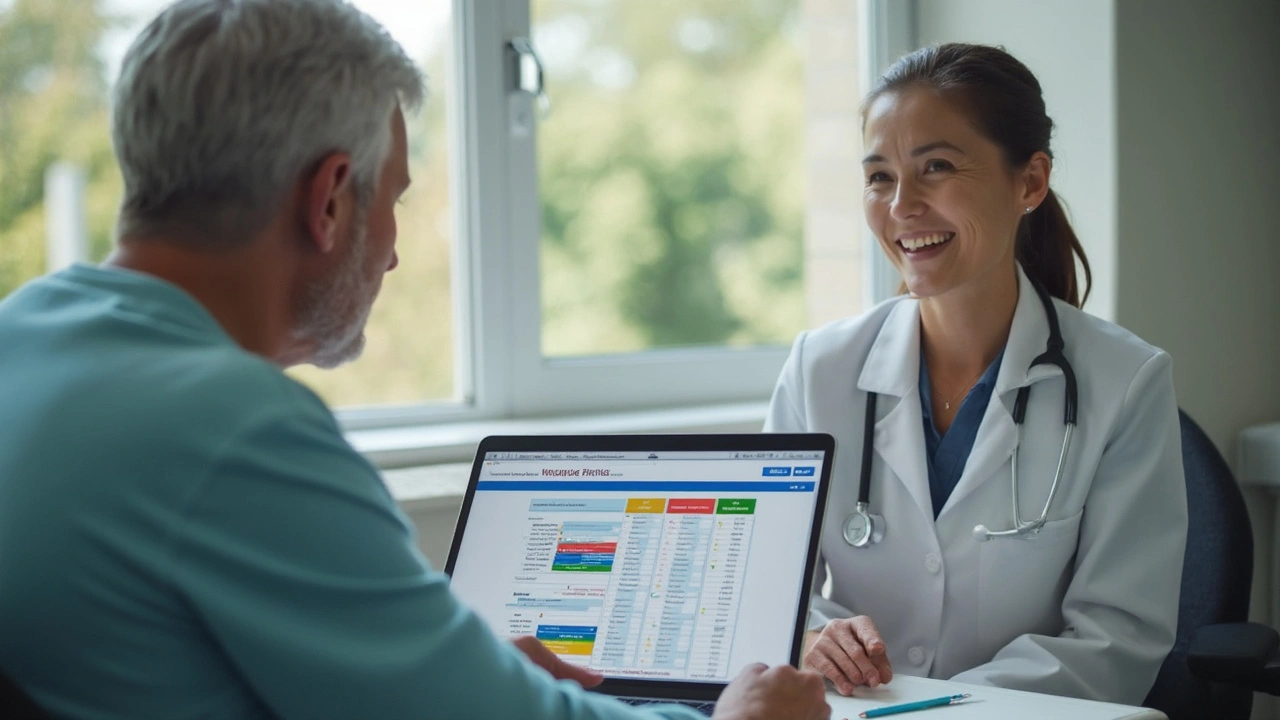Hypertension: What to do when your blood pressure is high
High blood pressure (hypertension) often gives no warning signs, yet it quietly raises the risk of heart attacks, strokes, and kidney problems. Want straight, useful steps you can use today? Keep reading—this page gives numbers, simple home checks, lifestyle moves that actually work, and a quick look at common medicines.
How to check and track your blood pressure
Buy a validated upper-arm cuff. Sit quietly for 5 minutes, feet flat, back supported. Put the cuff at heart level, avoid coffee/smoking 30 minutes before. Take two readings one minute apart and record both. Do this morning and evening for a week, then share the averages with your clinician.
Targets: normal is under 120/80 mmHg. Elevated is 120–129/<80. Stage 1 starts at ≥130/80 and stage 2 at ≥140/90. If readings reach 180/120 or you get chest pain, shortness of breath, sudden weakness or vision loss, call emergency services right away.
Treatments and practical steps you can start now
Small changes add up. Eat more vegetables, fruit, and whole grains—try the DASH-style pattern. Cut salt toward 2.3 g sodium (about 1 teaspoon) a day; packaged foods are the biggest source. Aim for 150 minutes of moderate exercise weekly (brisk walking counts). Limit alcohol—men no more than two drinks a day, women one. Losing weight even 5% can lower blood pressure noticeably.
Medications are common and effective. Main classes include:
- ACE inhibitors (e.g., lisinopril) — good for many people; watch for cough or swelling.
- ARBs (e.g., losartan) — similar benefits and fewer coughs than ACEs.
- Thiazide diuretics (e.g., hydrochlorothiazide) — often first-line for salt-sensitive patients.
- Calcium channel blockers (e.g., amlodipine) — helpful if other meds don’t work or cause side effects.
Take meds as prescribed. Missing doses or stopping suddenly can raise risk. If side effects bother you, call your provider—there are usually alternatives.
Other practical tips: keep a written or app record, bring it to appointments, and check your BP cuff accuracy yearly at a clinic. If you have diabetes, kidney disease, or a family history of heart problems, your treatment plan may be more aggressive.
Pregnancy needs special care: high blood pressure in pregnancy can be risky for mom and baby, so contact your obstetrician early if you’re pregnant and have raised readings.
Want deeper reads? On AccessRx.su we break down specific medicines, how they work, and safety tips so you can talk with your doctor and feel confident about choices. Start with simple monitoring and lifestyle moves—those give you the fastest, most reliable wins against hypertension.
10 Alternatives to Lisinopril: Options for Managing Your Blood Pressure
Wondering what to do if Lisinopril isn't right for you? This article breaks down 10 real-world alternatives, including how they work, their pros and cons, and what makes each option unique. Find out which blood pressure medication could be a better fit for your needs—from those that don’t mess with potassium to options better for people with other heart issues. Get quick facts, real tips, and a handy chart to compare them at a glance. Make your next doctor visit way easier and less overwhelming.
Exploring Lasix Alternatives: Top Diuretics and Their Benefits
Lasix is commonly used to manage conditions like edema and hypertension, but several alternatives offer distinctive benefits. This article delves into seven alternatives, each with unique features and potential drawbacks. Understanding these options helps in choosing the right medication based on individual health needs. Dive into the pros and cons of each alternative to make an informed decision with your healthcare provider.


